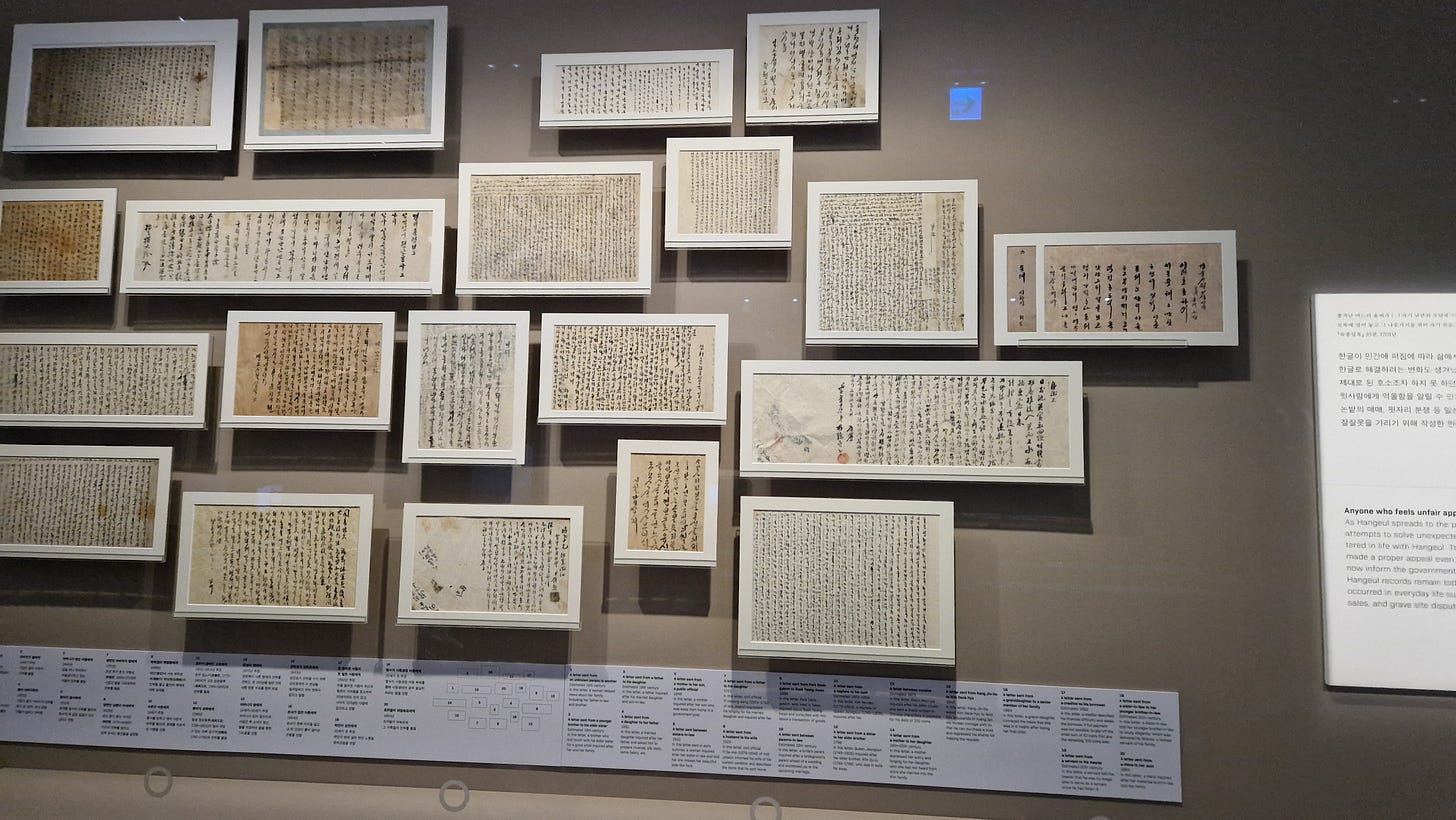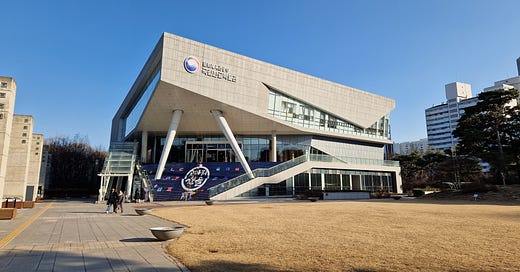I’ve now been in Korea for about three weeks. In my time here, I’ve had the opportunity to catch up with friends and meet a few new people. I’ve learned a few words on the fly and discovered some great commonly used abbreviations.
I wake up every day still dazzled by Seoul. Every word I see on the buildings around me and every bit of conversation I overhear is a reminder I’ve finally succeeded in coming here.
In a nutshell, I’m loving it.
That’s why I’ve decided to share with you some of the discoveries I’ve made.
Some will be about the Korean language. Some will be about Korean culture. Some will be about Korea itself.
Sometimes there’ll be pics. Sometimes there won’t.
This won’t follow a strict agenda or structure but you can expect one of those pretty much as often as I get chatty. (If you’re new ’round here, that means often.)
But enough about the intro. Let’s talk about what gave me this idea.
The Hangeul Museum
I recently went to a museum all about the creation of the Korean alphabet, Hangeul. My nerdiness made me expect to like it. My real nerdiness made me love it.
While the exhibition looks like it’d take 20 minutes tops, I spent close to two hours in it, reading everything and playing with all the interactive screens available.
I already knew a bit about how this alphabet was created to solve a major problem in Korean society: illiteracy in the Chinese characters (known as Hanja, 한자) used.
I discovered tons of new things, from how the transition was done to how it impacted society quickly.
The result was people saying that “a wise person can comprehend [Hangeul] in one morning and even an unwise can learn in 10 days.” (슬기로운 사람은 아침나절에 깨우치고, 어리석은 사람이라도 열흘이면 배울 수 있는”)
That couldn’t have been more of a success as this alphabet created in 1443 quickly grew more popular and allowed for low subjects to share their complaints with authorities and to share letters with their families and close friends.

Today, Hangeul is considered the simplest alphabet in the world (not the smallest, this honor goes to Rotokas).
This reminds me of when I first learned to read it, back in 2008. Back then, I only had a table of letters and a message left in Korean. I spent two hours trying to decipher it, until which I had only understood one word, 굳바이 (gudbai, a transliteration of the English “Goodbye”), but I had made sense of how it worked.
While it took me months to get used to it fully and recognize with relative ease the characters, I never really struggled as I did with the Japanese hiragana and katakana or the Thai script.
Hangeul truly is a piece of art.
Abbreviation heaven
One aspect I’ve always loved in Korean is the constant use of abbreviations1. I’m not sure if the fact Korean society has be expanding rapidly is the main reason for them shortening their words, but I love it either way.
Now, don’t get me wrong. I know this happens in other languages. One simple example is the way people laugh in their messages:
In Japanese: multiple ws as a shortened form of warau (笑う) → wwww
In Thai: multiple 5s as a shortened form of the number 5’s sound “ha” → 555
Korean does the same with its two ways to laugh:
ㅋㅋ, a shortened form of 크크 (keukeu)
ㅎㅎ, a shortened form of 하하 (haha)
The more you laugh, the more you put.
Now, I knew those and more, such as the ㅇㅇ used to say 응 (eung, “yes”), but I recently discovered three new ones I hadn’t heard in dramas, movies, and songs—or at least not noticed:
노잼
유잼
깜놀
The first difference is that these can also be said out loud but they can even be used as verbs! Let me show you:
노잼
This one comes from the combination of the Korean way to write the English word “no” (노) and a shortened version of 재미 (jaemi) which means “interest.”
However, 재미 often goes with 있다 (itda) to mean “to be fun.”
As a result, 노잼 means “no fun.”
As I saw in a bar “No beer , 노잼.” I mean, damn, isn’t this fun?
What? You want to agree? Then, let’s talk about the next one!
유잼
This one is pretty much the opposite! 유 comes from the Hanja 有 which means “to have.”
If there is fun, it’s fun so 유잼 simply means that something is or was fun!
Here’s how a conversation could go:
오늘 맥주 없어서 노잼이네. (Today is no fun because there's no beer.)
아니지, 소주가 있어서 유잼이지! (No, it’s fun because there’s soju!)
그래, 네 말이 맞아 ㅋㅋㅋ (Yeah, you’re right, haha.)
I mean, isn’t the existence of such words 유잼?
깜놀
And finally, we turn to one I was taught by a random old man in a supermarket after I surprised him by saying a few words in Korean to the cashier. He suddenly blurted out 깜놀! so I asked what it meant (while blushing of course).
The lady helped the old man explain it came from 깜짝 놀라다 (gamjjak nollada, “to be suddenly surprised”).
I forgot about it soon after… until a friend used it out of the blue this past weekend. And there we go, I’m not forgetting it again!
Fun times
Learning a language is a never-ending journey.
It should be fun most of the time. While it’s easy to focus on everything that’s going wrong with your studies or your lack of time, it’s important to enjoy the times it surprises us. You know, the ones we want to scream 깜놀!
So, yeah, that’s pretty much where I am right now.
Sitting in a coffee shop, looking at the sign on the other side of the street reading 전설의 짬뽕 and thinking once more I love this language.
Hopefully, you’ll have enjoyed this random ramble as much as I loved sharing it!
Let me know either way and until the next one of those,
안녕!
If you want even more of those, check this website filled with many more I had never seen!





TL;DR - Love this, want more. 유잼
How exciting!! Can’t wait for you to continue sharing your experiences.